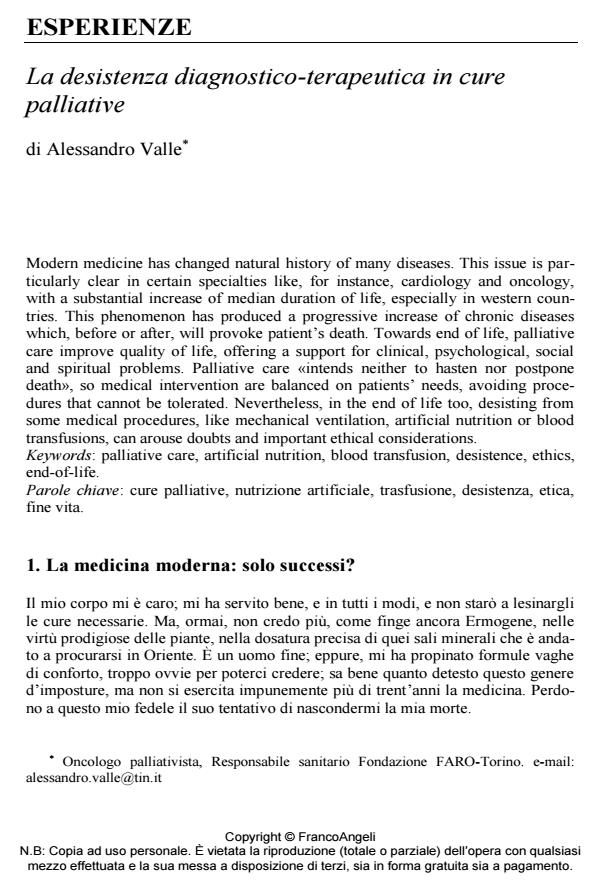La desistenza diagnostico-terapeutica in cure palliative
Journal title SALUTE E SOCIETÀ
Author/s Alessandro Valle
Publishing Year 2015 Issue 2015/3
Language Italian Pages 14 P. 117-130 File size 353 KB
DOI 10.3280/SES2015-003010
DOI is like a bar code for intellectual property: to have more infomation
click here
Below, you can see the article first page
If you want to buy this article in PDF format, you can do it, following the instructions to buy download credits

FrancoAngeli is member of Publishers International Linking Association, Inc (PILA), a not-for-profit association which run the CrossRef service enabling links to and from online scholarly content.
Modern medicine has changed natural history of many diseases. This issue is particularly clear in certain specialties like, for instance, cardiology and oncology, with a substantial increase of median duration of life, especially in western countries. This phenomenon has produced a progressive increase of chronic diseases which, before or after, will provoke patient’s death. Towards end of life, palliative care improve quality of life, offering a support for clinical, psychological, social and spiritual problems. Palliative care «intends neither to hasten nor postpone death», so medical intervention are balanced on patients’ needs, avoiding procedures that cannot be tolerated. Nevertheless, in the end of life too, desisting from some medical procedures, like mechanical ventilation, artificial nutrition or blood transfusions, can arouse doubts and important ethical considerations.
Keywords: Palliative care, artificial nutrition, blood transfusion, desistence, ethics, end-of-life.
- La famille face à la maladie en phase terminale. Ethnographie dans une maison de soins palliatifs au Piémont (Italie) Alessandro Gusman, in Anthropologie et Santé /2016
DOI: 10.4000/anthropologiesante.2019 - Preparing for a good death? Palliative care representations in the italian public television programming Nicoletta Bosco, Valeria Cappellato, in Death Studies /2022 pp.1963
DOI: 10.1080/07481187.2021.1876788
Alessandro Valle, La desistenza diagnostico-terapeutica in cure palliative in "SALUTE E SOCIETÀ" 3/2015, pp 117-130, DOI: 10.3280/SES2015-003010